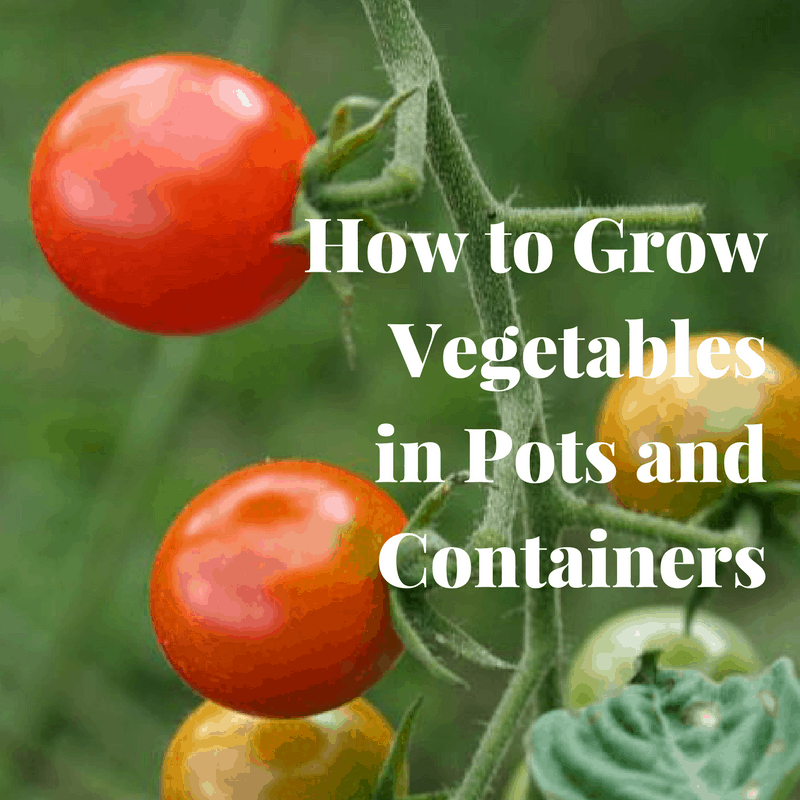Tomorrow, I’m giving a free talk at the Local APX Market in Appomattox, Virginia at 11 a.m. on Growing Vegetables in Pots and Containers. I’m excited to share the basics with local folks, but I realized that so many of my readers aren’t local and still want the same information. The solution? A series here on the blog on how to grow vegetables in containers.

How to Grow Vegetables in Containers
Anyone can learn how to grow vegetables in containers. For those with limited space in their backyard, pots or containers are an ideal way to grow fresh vegetables.
Now, one word of caution: you know all those blogs where Suzy Creamcheese shows you the simple, easy, fast Pinterest-inspired way of taking an old boot, filling it with junk from her kitchen, and growing tomatoes that win first prize at the country fair? She insists that all you do is sprinkle magic Epsom salts onto your plants and BAM – instant vegetable garden!
Okay, I’m exaggerating…just a little bit. In all seriousness, some of those Pinterest-inspired posts and bloggers who don’t garden but like to write about gardening make me want to tear my hair out. They’re filled with a lot of promises and hope and not much else.
I’m not saying that growing vegetables in pots or containers is difficult. It’s not. But you do need to apply a modicum of common sense and a bit of smarts to what you’re doing in order to get at least something edible out of the deal.
The Series: What We’ll Discuss
This is going to be a huge series on container vegetable gardens! In this series, I’ll share with you the following:
- Choosing a location for your container vegetable garden.
- Considerations for containers; making recycled containers into a garden.
- Sizes of containers and a chart of vegetables you can grow in each size container.
- Companion plants for a container garden.
- Repurposing window boxes and even rain gutters for container gardens.
- Soil selection, fertilizer, compost, watering, and more.
- Preparing your garden – and taking it down for the winter.
- A chart of vegetables and the size pots they need.
- And much, much more.
If you cannot make it the local APX Market this Saturday, April 1, 2017, this blog post series is the next vest thing. I can’t wait to get started.
Be sure to follow my blog on Bloglovin‘ and “Like” us on Facebook for the latest posts.





